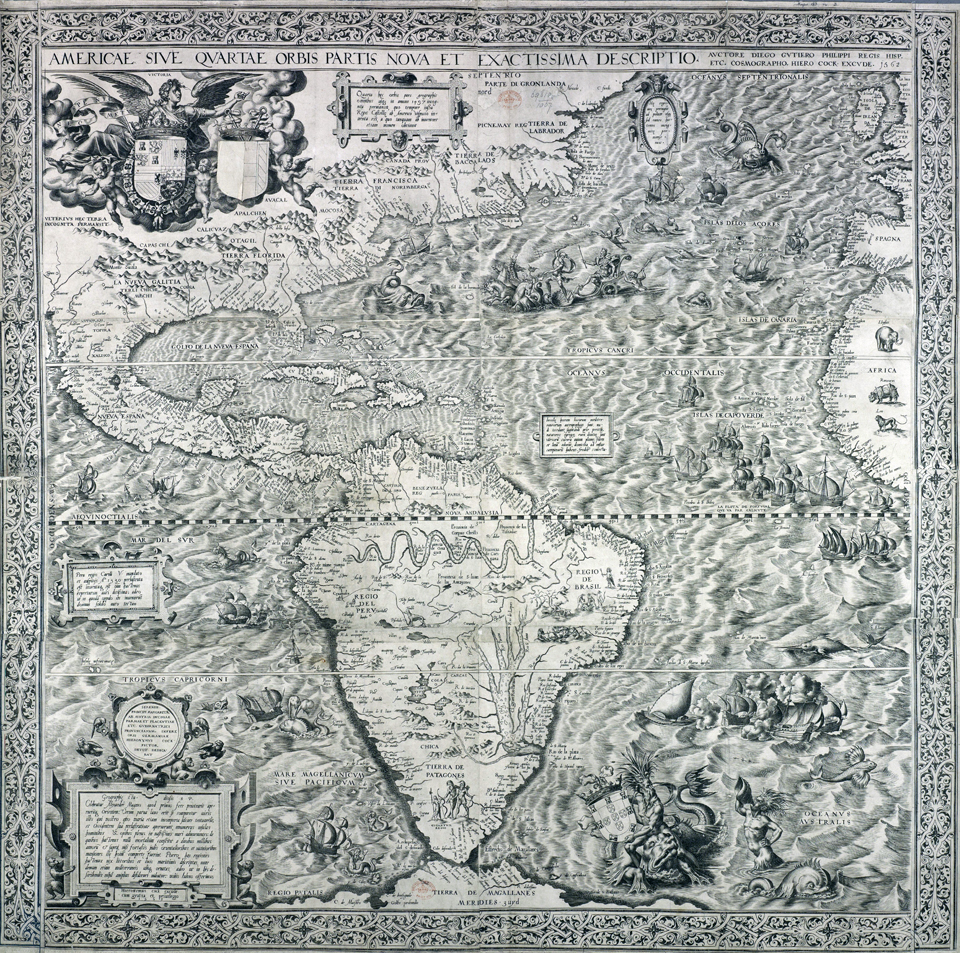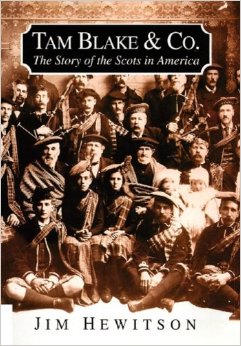Brave New (Scots) Worldby Tom Doran Most people, even today, with all our knowledge about explorers and their histories revisited and re-evaluated, still think that Christopher Columbus discovered “America” - or at the very least was the first European to visit the “New World.” We now know that this is not in fact what happened, and while we will probably never know who exactly was the first person or peoples (outside the peoples who were in fact already here and for many millennium), we do know that the Vikings got here long before the Spanish conquerors. 
The first Scots who came to the new world, supposedly came with the Vikings. It is commonly told that a bard from the western isles was on board a Viking ship during an early exploration (late 900’s) of the North American continent, but did not set foot on land. The first recorded Scots were apparently two slaves of Leif Eiriksson (or Erikson) – a named man and woman (Haki and Hekja, which don’t seem to be Celtic names, but could be), who acted as sort of make-shift scouts for an expedition sometime shortly after the year 1000. The couple did land, scout out the terrain and gather food. Recent DNA studies in Iceland (the jumping off point for the expeditions to Greenland and Newfoundland) apparently show a large maternal line of Celtic blood. It seems that the Vikings took many Scottish and possibly Irish wives (or slaves) with them when they settled Iceland. The active settlements in Vinland (Newfoundland) perhaps only lasted a decade – probably due to animal depopulation and conflicts with the locals. Plus, the “Little Ice Age” was just around the corner and life and travel (especially) was getting more and more difficult. Those Vikings (while others still settled on Greenland for several hundred years), either died or more likely fled back to Iceland. Henry Sinclair – Earl of Orkney. There are totally unverified stories and assumptions that this 14th century Baron of Scots/Norse stock, made a journey to America, and that one of his followers, Sir James Gunn, left behind “evidence” of his arrival in Massachusetts in that era (The Westford Knight). The connection with his family and clan (who established Rosslyn Chapel) to the Knights Templar and Free Masons has been the cause of much unfounded speculation of his adventures – including carvings and other “clues” left in the very stone fabric of the now world-famous chapel. There is however no proof whatsoever that he ventured to America – though the conspiracy theorists flourish to this day. Tam Blake was the name of an early Scot adventurer - he arrived in Mexico in 1534-5, and joined the Spanish conquistador Francisco Vázquez de Coronado on his exploratory expedition of the 1540’s, looking in vain for the fabled Seven Cities of Gold. If he was there with the Spanish, he was the first Scot to travel through the American southwest. 
The very first known Scots attempt to colonize the new world, came in the 1620s. Sir William Alexander received a charter for a colony by James VI of Scotland. By 1629, the Scottish settlement of Nova Scotia came into existence. Battles were fought with the French and the English intruded as best they could by legal means to disrupt the colony. Later in the 17th century, areas of what is now New Jersey were settled and governed by Scots in all leading positions – as well as a tremendous influx of thousands of Scottish indentured servants. In what is now South Carolina in particular, Scots negotiated with the English for lands in the already established English colony of Carolina – several counties thus emerged which were Scottish property and peopled with Scots in a great proportion. A Scottish settlement was attacked by the Spanish and Spanish allied Indians – the English purposely did nothing to help the Scots and the settlement of Stuarts Town was destroyed. The English, jealous of the rather unique Scots relationships with the Indians (which helped build their growing and prosperous trade). Highland Scots seemed to have had a rather good relationship with the native tribes – there are several thoughts on this. One, the Highlanders had good to excellent woodcraft skills; were from a clan/warrior society; they had little problem for the most part marrying into the tribes (though not always permanently); they were basically very fair in the trade (there were several trading organizations formed in North America that were mostly or entirely made up of Scots), to the anger and jealousy of the England and French: perhaps most importantly, they did not attempt to proselytize to the Indians the way the French and Spanish relentlessly did. For the most part the Scots had no interest in converting the Indians to Christianity. There are many examples, some famous, of the adventures of the offspring and descendants of Scottish-Indian marriages and their place in Indian society and history.  To this day, there are still great numbers of people who have Scottish antecedents in New Jersey and the Carolinas. We have covered the Darien Scheme in detail previously – but it worth mentioning here in relationship to this article. The Highland Clearances, a subject rather too complicated for talking about here, in shorthand, nevertheless should be mentioned as 10’s of thousands of Highlanders were forced off their ancestral land – and many ending up in the new world in the 19th century. Many settled in Nova Scotia, where to a degree their culture still survives, and where a Nova Scotian variation of Scottish Gaelic still survives. During the 19th century it is estimated that more than one million Scots emigrated to America. Factory workers in New Jersey: According the the history of Kearny, New Jersey, it hosted one of the last major influxes of Scots into America (as a group). Wikipedia states: “The early influx and development of industry in Kearny dates back to 1875 when the Clark Thread Company of Paisley in Scotland extended its activities to the United States by erecting two large mills in Kearny, and adding two others in 1890. These mills brought to Kearny thousands of Scots immigrants. Many of them would play on Kearny's soccer teams in National Association Football League. Many are buried at Arlington Memorial Park in the Kearny Uplands. Also noted: “In 1887, Sir Michael Nairn established the Nairn Linoleum Company of Kirkcaldy in Scotland, now the Congoleum Nairn Company of Kearny, giving further impetus to local industrial growth. This also lead to the growth in the Scottish-American population which In the 1960s was about 21,000." There is a well-know restaurant in Kearny – The Argyle – which caters to Scottish-American tastes. You can get authentic haggis, fish and chips, meat pies, black pudding, deserts and more. It has be going strong for more than 50 years and has expanded as its popularity has grown. During the late 20’s and 30’s, it is said that the economic depression sweeping the world, caused perhaps fully 10 percent of the Scottish population to leave its shores – with many heading to Canada, America, New Zealand and Australia. In the US alone, there is estimated to be almost 5 million Americans of Scottish decent – virtually the same numbers as the population of Scotland itself. Resilient, hardy, opinionated and strong willed, the Scots brought their culture with them where-ever they went. SCOTLAND THE SEXY?We all know about “romantic Scotland”, but how long has Scotland been a “sexy” place. Well, the answer to that is ------about 385 million years! It seems a researcher named John Long, a paleontologist from Flinders University in South Australia made an interesting find in the upper Givetian freshwater strata, a strata that includes the John o’Groats sandstone of Caithness and the Eday beds of the Orkneys. His find was a Microbrachius dicki. Now in case you aren’t up on your Microbrachius dicki readings, the Microbrachians are placoderms or armoured fish. This particular one has been found to have a set of claspers on the males, and a set of indentations on the female which allows them to lock together when copulating making them the first vertebrate to have internal fertilization. Although once considered a dead end evolutionarily, their jaws and other features make some scientists put them back in human evolution. Although this appears to be the start of sex, the fish lost the ability and continued to “spawn” – that is to say an external fertilization of the eggs, and it all had to be reinvented all over again. An animated video with article can be found here |